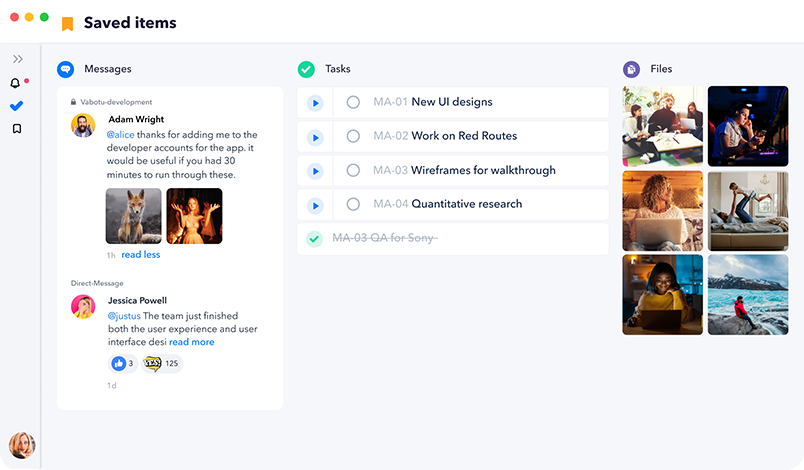Project management can be a challenging task. It’s a balancing act that demands that everyone in your small business or all departments in your creative agency be on the same page. Whether it’s software development or graphic design, a project management tool for small business can make the process transparent, help optimally allocate resources, and ensure that timelines are managed, and deadlines met.
It’s obvious that projects across organizations are getting more complex. From creating a campaign to developing an app, projects now have more stakeholders, more demanding goals, and shorter timelines. Whether it’s a project management tool for one person or a project management tool for small business, implementing it will bring order and help you organize the process in a more effective manner.
 Project management tools: What the statistics say
Project management tools: What the statistics say
Considering their benefits, it might seem that project management tools would be an integral part of most organizations. But the statistics point to something else. In spite of its importance, only about 61 percent of managers apply a well-defined project management methodology to their projects.
Project management is made a cultural priority in only 46 percent of organizations. What’s worse, only a quarter of all companies use a project management tool. Subpar project management leads to the wastage of around 11.4 percent of resources. A survey of project managers found that only 35 percent of them could state that they were either “somewhat or very satisfied” with the existing systems.
Why use a project management tool?
A project management tool for small business can deliver significant advantages to everyone from freelancers and software developers to creative agencies. Here are five reasons why you should use a project management tool.
1. Better planning
The most obvious advantage of using a project management tool for creatives is that project planning will be faster and more effective. Without specific software, project management would lead to unclear goals, longer and unproductive workflows, needless interruptions, suboptimal allocation of personnel, and the unavailability of resources for the team members.
A project management tool establishes a hierarchy of tasks and aligns responsibilities with individuals. You can identify supplementary tasks within each main project and figure out the sequential order of steps. This transparency saves time and effort for team members.
A team leader can instantly know who’s responsible for what part of the project and also their current status. This makes it easy to give relevant and timely feedback. Nothing gets stuck in the workflow and tasks proceed seamlessly.
Heycollab helps teams set clear objectives and goals. Everyone involved would know the larger target and their specific responsibilities. This not only keeps a team on the same page but motivates members to contribute in a productive manner.
2. Effective task management
Every project would have multiple supplementary tasks. The conventional method is an ad hoc assignment of these tasks. There will also be unreliable documentation of the workflows and confusion about which particular team member is in charge of which aspect of the task.
Inefficient task management can be a problem for all tasks but it’s particularly troublesome if it’s a new or complex project. Merely noting down the supplementary tasks along with the individuals responsible for them on an Excel sheet wouldn’t be productive.
With a project management tool for small business, team leaders can assign major tasks to employees and measure their progress. Since leaders quickly get feedback, they can give suggestions at the right time without delaying the process. This unifies teams and gets rid of unnecessary roadblocks.
Creative agencies and software development teams use Heycollab to establish viable processes in project management. Even when the projects demand non-linear thinking and innovative execution, this clarity ensures that the individual tasks are efficiently executed.
3. Seamless workflows
Getting a team to work as a single, cohesive, and functional unit is difficult in any sector. But it’s particularly challenging in creative sectors like advertising, digital marketing, or software development. That’s because different domains with varying expertise and management styles have to work together on projects to create original products.
When you use a project management tool for creatives, you make it easy to organize, measure and manage the process. Team leaders would get a clear idea about which team member is working on which task. Without interrupting that employee or calling them for unnecessary meetings, managers can track their progress and know if they face any challenges.
More importantly, a project management tool for small businesses can help leaders allocate resources more efficiently. No individual would have a disproportionate number of tasks. If someone needs assistance, more people can be assigned to that particular task. This also helps the morale of the unit since there will be an equitable division of responsibilities.
4. Easy access to documents, contacts, and calendars

A good project management tool for creatives will also be a storehouse for all necessary documents. But beyond merely storing them, such tools also enable team members to access them with ease. This is vital since most projects in creative organizations have multiple documents, notes on revision, and internal and external feedback.
When team members can access documents, contacts, and calendars, there’s no need to send countless emails with attachments. These long email threads can not just clog the system but also interrupt individuals when they would be doing deep work.
If someone needs creative assets, they can easily take them from the centralized storage. If someone wants to convene a meeting, they can schedule it through calendars. If someone wants to call a team member, they will have their contact information in seconds.
While giving access to team members has always been important, they’re crucial in an age of remote and hybrid work. Distributed workforces can unify with a project management tool and effortlessly handle their responsibilities.
5. Performance analysis
Organizations that successfully complete projects have one thing in common. They don’t look at projects in isolation. They view each project as an opportunity to learn about their systems, personnel, and working culture. A project management tool for small business empowers this process with data.
Now you will know how long each project takes to complete and how long each individual member takes to complete their specific task. With this data, you can better allocate resources in future projects.
Once you know the performance of your team members, you can assign tasks that align with their core strengths. This helps you better predict the time you would need for the next project. All these make sure that you improve the collective output of your team.
 How can you benefit from a project management tool?
How can you benefit from a project management tool?
Project management tools can help organizations in multiple domains. But before you select one and roll it out, it’s important to know how your organization will benefit from it. This is how a project management tool for small business can help different organizations and individuals.
Small business
A project management tool for small business will help you delegate and monitor tasks more effectively. If you have a remote team, you can easily manage projects and give your input.
It also helps you allocate responsibilities and track progress without making unnecessary phone calls. Finally, it helps you unify operations and keep your expenses within budget.
Creative agencies
You can create viable timelines, allocate functions, monitor individual tasks, and give timely feedback with a project management tool for creatives. Writers, designers, and illustrators won’t have to ask each other for digital assets or send them through email.
You can also give specific feedback to individual members. Heycollab, for example, simplifies and optimizes internal communication for managers and team members.
Freelancers
With a project management tool for freelancers, you can organize your workflow and store all your resources. You can easily know where you’re in the project lifecycle and the resources you need to complete it on time.
If you coordinate with a digital agency or client, you can have dedicated communication channels for feedback and suggestions.
Software development
A project management tool for software development gives you the resources usually reserved for enterprises. Instead of sharing with the client after completion, you can allow clients to view relevant project data.
This helps them give direct and timely feedback, request edits, and analyze the progress of the project, all in the same software.
Graphic designers

As a graphic designer, what you don’t want, are meetings, interruptions, and irrelevant and late feedback. A project management tool for graphic designers solves these problems.
You will have the necessary information and access to crucial documents, logos, brand identity guidelines, suggestions from the account management team, and feedback from the client in the same place.
In short
A project management tool for small business offers demonstrable advantages. You can complete projects quickly using an optimal amount of resources and within your budget. It also helps you learn from each project and identify the strengths of both individuals and your organization as a whole.
————-
Heycollab is a project management tool built for teams like yours. With a free 14-day trial you can try out all the cool features. To get started visit https://heycollab.com/

